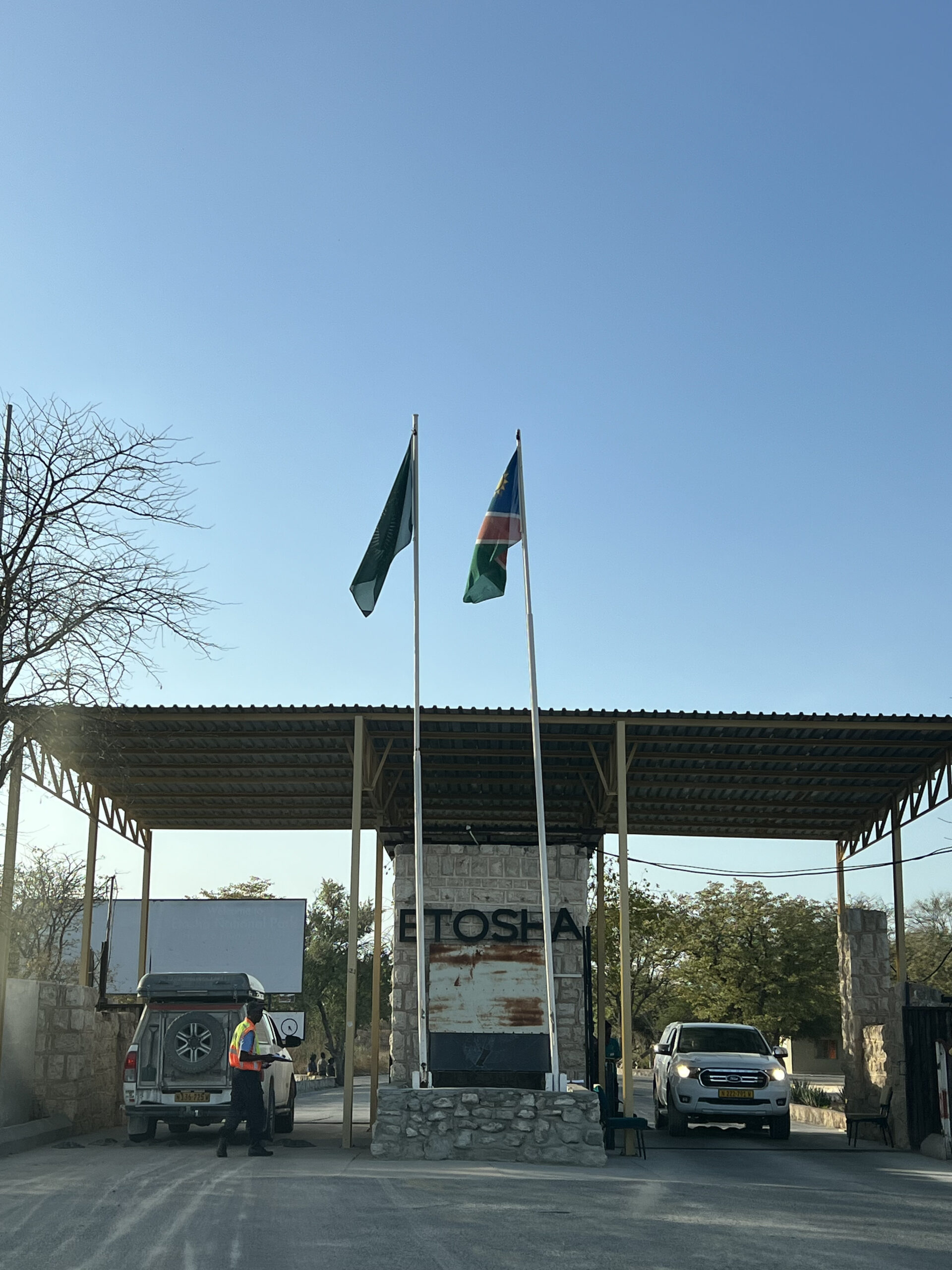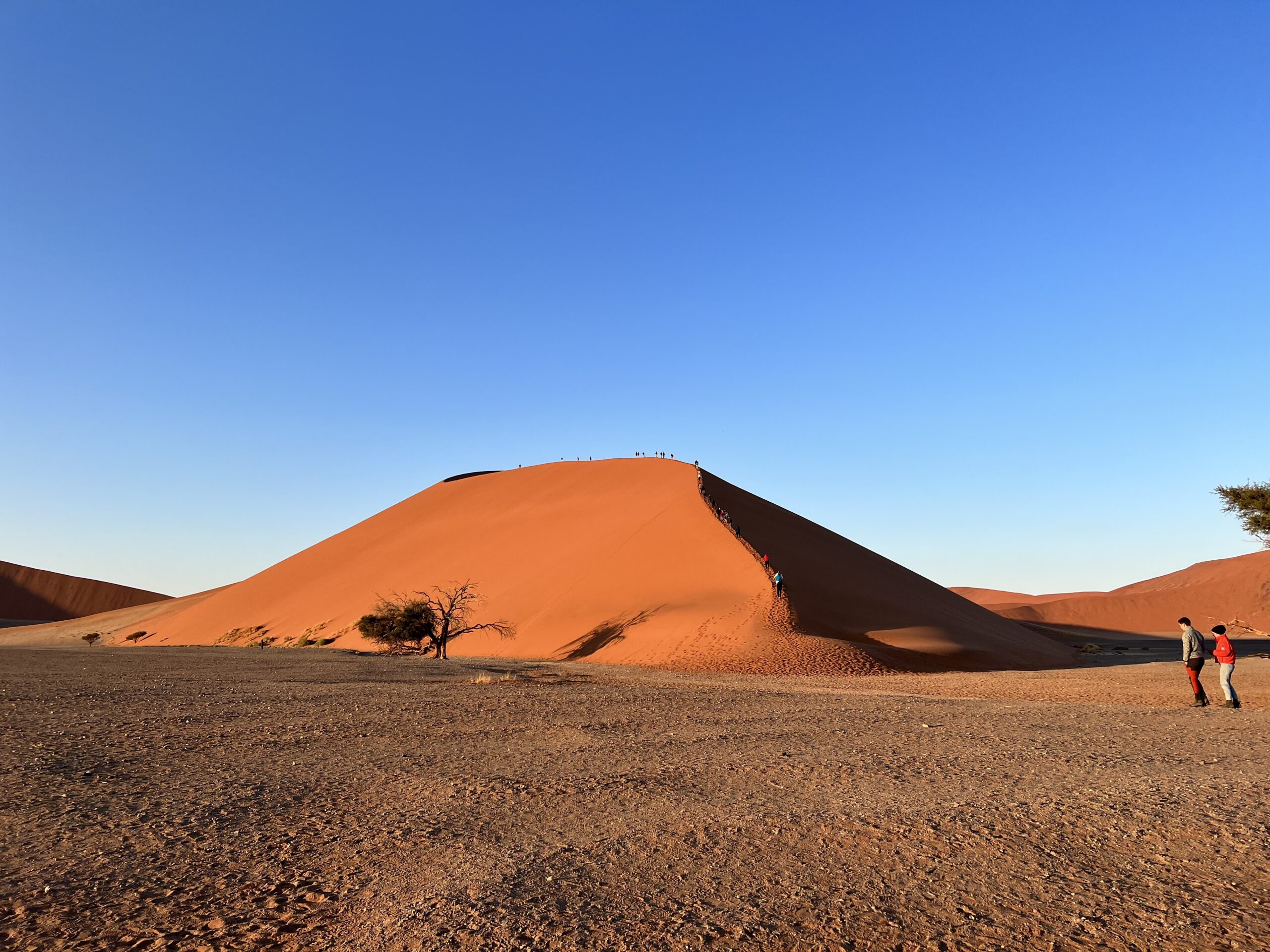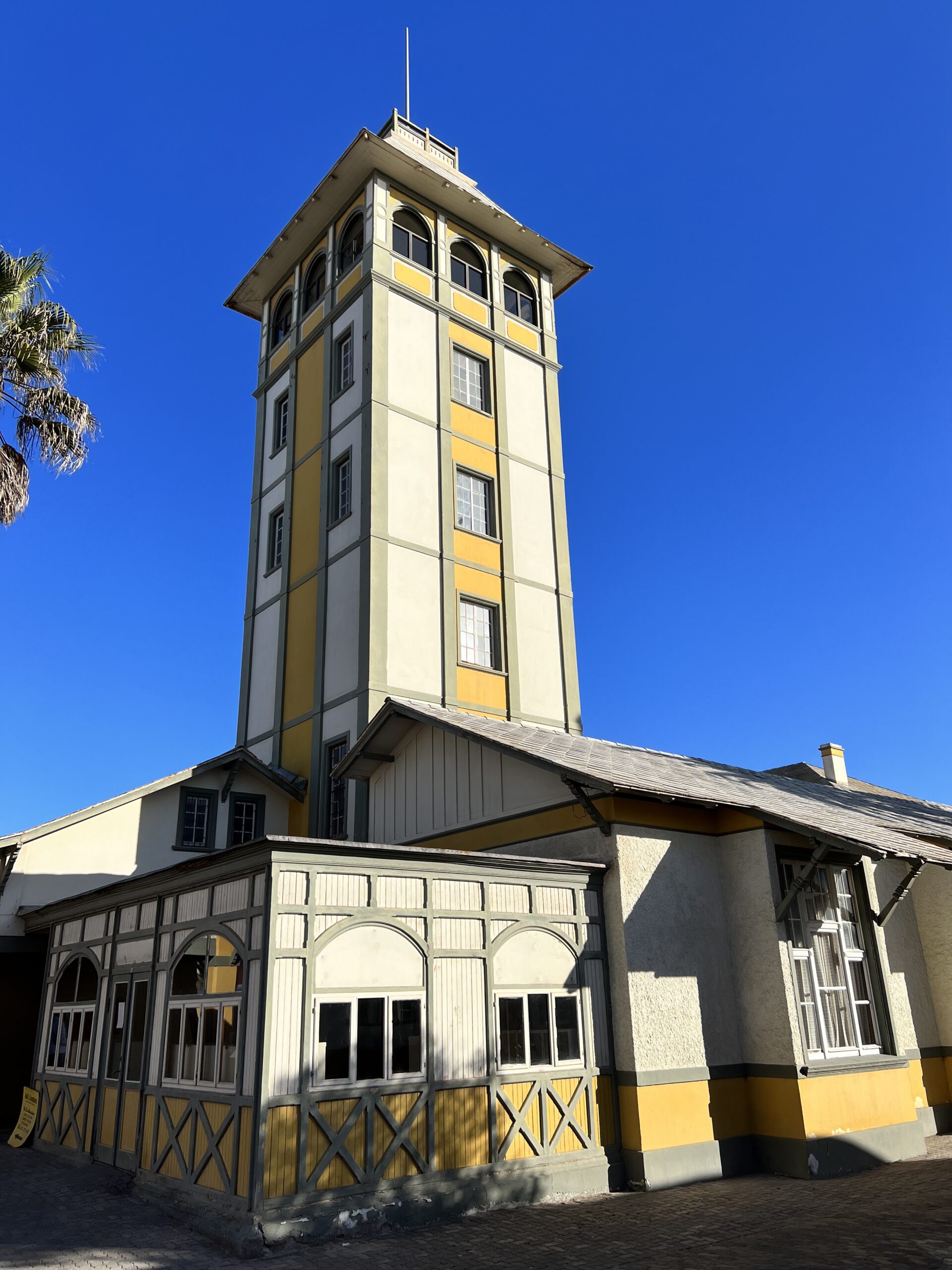
Highlights of Namibia has got to be the world premier wildlife venue of Etosha National Park, where you can crouch or sit by a waterhole to observe the animals.


Covering an area of more than 20,000 sq km, Etosha National Park ranks as one of the world’s greatest wildlife-viewing venues. Its name, which means Great White Place or Dry Water, is inspired by the vast greenish-white Etosha Pan, an immense, flat, saline desert covering more than 5000 sq km, which for a few days each year, is converted by the rains into a shallow lagoon. Sometimes you can see flamingos and pelicans. However, it is the surrounding bush and grasslands that provides a habitat for Etosha’s diverse wildlife. Although it may appear barren, the landscape surrounding the pan is home to 114 mammal species, as well as 340 bird species, 16 reptile and amphibian species, fish and countless insects.

We drove from Swakopmund to Etosha National Park, to the Anderson Gate. Do note that only if you have booked an accommodation with Namibia parks and wildlife reserve, then you can stay overnight in one of the resorts. If not, you would have to stay at one of the private resorts just outside the camp. For our first night, we stayed at Okakuejo Camp.

Set within the Etosha National Park, this elegant hotel is next to the Okaukuejo Waterhole and 9 km from the shoreline of the Etosha Pan. It is one of the better maintained camps in the National Park, so do not expect too much from the rooms. For those who prefer camping outdoors, it is cheaper and you can set up your own tent on the camping grounds. Upon arrival at the Resort, we had to register at the administrative office, and to pay the park admission fees (NAD200 per person per 24 hours = SGD 14.44) which is inclusive of the park conservation fee and overnight fee. For those who are keen to do some online work, just take note that the Internet connection in the camp is not very stable.

It was sunset when we arrived, and we were happy to be able to spot a few animals at the waterhole already. We then went for dinner at the resort’s restaurant, as we did not opt for the self-catering option.


At night, more of the animals started to lumber towards the waterhole, so we were lucky to see elephants, rhinos, a giraffe, zebras and some antelopes. We could stay here the whole night just to see this spectacle. The visitors are advised not to talk and keep their volume down, if not it would scare the animals away.

Okakuejo is probably Etosha National Park’s best rhino-viewing location, particularly between 8-10pm. You would get a feast of zebras, wildebeest, jackals and elephants mostly at night. During the day, due to the heat and lack of camouflage, only a few animals would appear at the waterhole.

We had an early night and woke up the next morning for our 6am morning safari tour. It was chilly, so do remember to pack a poncho and thick sweaters. With our driver and the guide, we managed to spot antelopes, impalas, elephants etc. However, the animal that most people on the jeep wanted to see – the lion – was unavailable for spotting. So we turned back to the camp after about 3 hours and had our breakfast. The breakfast service was almost winding down by the time we reached back camp.


After that we checked out of Okakuejo Resort and headed to the next camp – Halali. It is located in the middle of the park, about 2 hours drive from Okakuejo. It nestles between several dolomite outcrops. The best feature of Halali is its floodlit waterhole, which is a 10-minute walk from the rest camp and sheltered by some trees with huge boulders strewn about. There is a well-serviced campsite here, with some luxury chalets for a good night’s sleep. We only had lunch here and did not managed to reserve a night here. Our accommodation for the second night would be outside of the park gates.

After lunch, we walked to the waterhole at Halali, but there was not much action, so we left disappointed.

During my self-drive back towards Anderson Gate, we saw this medley of animals at one of the waterholes – Gemsbokvlakte – and it was amazing. There were zebras, antelopes, ostriches etc.


We had to exit the National Park by Andersson Gate, so this has to be done before sunset. We were lucky to see a herd of elephants crossing the road, and with many safari vehicles in front, we also stopped the car and indulged in this unforgettable sight. It was around 5.45pm when we exited the park and headed to our accommodation for the night, Etosha Village.

Etosha Village uniquely combines affordability with comfort and delivers the perfect safari style experience in a private and protected reserve directly adjacent to the Etosha National Park, near Okaukuejo. At Etosha Village nature and luxury are in perfect harmony through design and comfort. Besides the 55 accommodation units and camping facilities, Etosha Village has three restaurant seating areas, a unique bar with a big screen television, a sparkling pool plus two kiddies pools as well as a well-stocked utility and curio shop.
Other camps in the National Park for those who plan for a longer period of time
– Namutoni Rest Camp
– Onkoshi Camp
– eastern side: Dolomite camp
Important information
Park Gates opens at sunrise and closes at sunset. Visitors are encouraged to check in at either Von Lindequist Gate or Andersson Gate, where you can purchase your permit or do so at your place of accommodation.
Okakuejo Camp: N$ 2300 for a double room (= SGD 166.50)
A refundable cash room deposit fee of N$ 500.00 per room shall be paid on arrival at the Resort/Camp
Etosha Village (private resort just 2.5km away from the Anderson Gate) one night $252 which includes the breakfast and dinner buffet.
- When driving in the park, stay in your vehicle. Wildlife is dangerous and can be well-camouflaged. For your own safety, do not open car doors, lean out of windows or sunroofs or climb on top of vehicles to get a better view.
- Speed limit in the park is restricted to 60 km/h , or 20 km/h within the area of the designated camp site or rest site.
- Visitors may not travel in the park or cross the boundaries of the park after sunset or before sunrise.
- There is no public transport into and around the park, so you must visit either in a private vehicle or as part of an organised tour.
Choosing the season
- We went in winter season (June – August)
It was very nice, because during the day it warms up but night time and early mornings can get very cold. Pack some warm clothing along.


